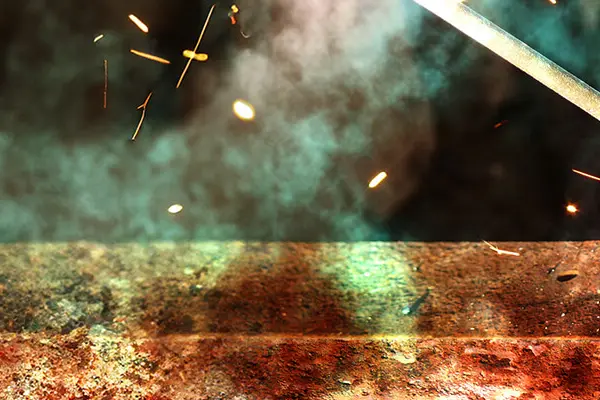
Welder qualification testing
DEKRA offers certification for welders, Initial certification and two-year extensions.

Welder qualification testing
DEKRA offers certification for welders, Initial certification and two-year extensions.
SS-EN ISO 9606-1 - welder qualification testing
– Fusion welding of steel
Initial certification
During initial certification, the welding is supervised by a welding examiner from DEKRA Industrial AB. The certificate is personal and is valid for either two years (with the possibility of a two-year extension) or three years (if the welder is required to be re-tested every three years). This requires that the welder works within the certified scope and that this is confirmed by a responsible person within the employer’s organization with a signature every six months.
The certification process involves supervision where the welder follows a welding procedure specification (WPS or pWPS) developed according to SS-EN ISO 15609 (Specification and Qualification of Welding Procedures for metallic materials – Welding Procedure Specification). During the certification, the welder must be knowledgeable about and able to work according to the WPS. During the welding test, the welder is responsible for ensuring that all parameters in the WPS are followed, and the supervisor ensures compliance. Upon completion of the test, the welder must clean the weld from oxides, spatter, and similar residues using appropriate equipment.
Each test piece is visually inspected and then tested using one or more testing methods according to the standard, such as radiographic testing, ultrasonic testing, or bend testing. If all requirements are met, a certificate is issued, known as a welder qualification test certificate (commonly referred to as a “welding license”).
If multiple test pieces are welded, a certificate may be issued that combines the qualification ranges of the individual test pieces, for example, if both a small and a large pipe are welded.
A knowledge test (theoretical test) may be conducted in connection with certification but is not mandatory.
Two-year extension
For a two-year extension of a certificate, the purpose is to ensure that the welder has recreated the original conditions of the test, with the exception of thickness and diameter (which must remain within the original validity range). Other essential parameters must remain the same as in the initial test, including welding method, form (e.g., plate or pipe), butt or fillet weld, material group, filler material, welding position, and welding details such as welding from one or both sides.
To extend a certificate for another two years, the following conditions must be met:
- A responsible person within the company must confirm the welder's work within the certified scope every six months during the certificate’s validity.
- All documentation must be traceable to the welder and the WPS(s) used.
- Two welds must have been tested within the last six months, either volumetric testing (radiographic or ultrasonic testing) or mechanical testing (fracture or bend testing).
- The tested welds must meet the acceptance criteria according to SS-EN ISO 9606-1 for welding tests and the relevant acceptance standard for the product if the samples are taken from production.
If a welder has been qualified through a butt weld test, a fillet weld test can be performed on plate thickness ≥ 10 mm or the same thickness as the butt weld test (if thinner), with a single layer in welding position PB. This is done to extend the validity to fillet welding if necessary.
Practical tips
DEKRA can issue combination certificates, meaning that two previous certificates can be merged into one if one of the following conditions is met and other essential parameters remain the same:
- Different diameters and thicknesses for pipes.
- Different welding positions for pipes with the same diameter and thickness.
- Different welding positions for plates with the same thickness.
- Different thicknesses for plates with the same welding position.
For the extension of a combination certificate, it is sufficient to submit one test within the validity range from each original certificate, totaling two tests.
Certification is conducted according to DEKRA’s price list or through a quote or agreement.
DEKRA Industrial AB can also assess certification as a Notified Body (No. 0640) according to AFS 2023:5 (PED/2014/68/EU), Annex 1, section 3.1.2.
DEKRA Industrial's decisions regarding certification can be appealed, and complaints should be submitted to the management of the certification body. Appeals must always be made in writing.